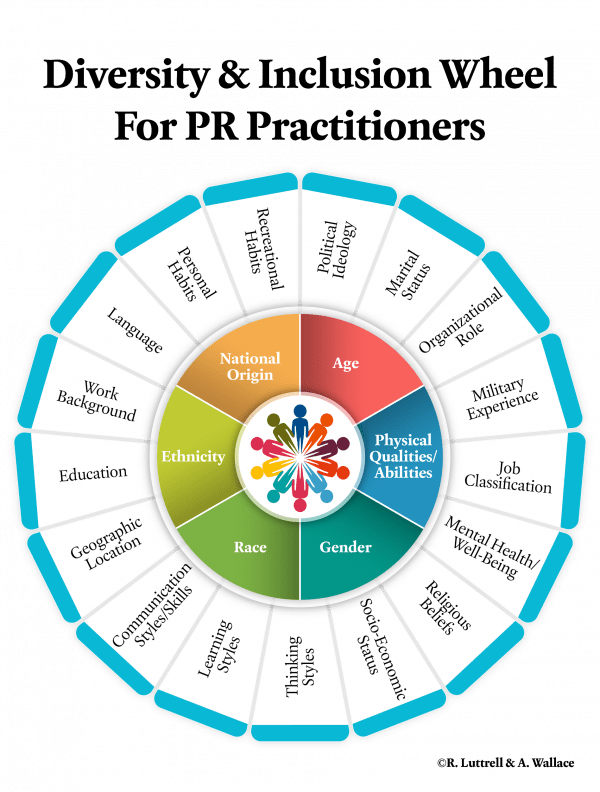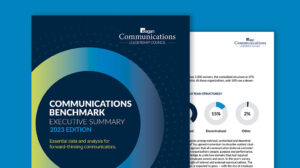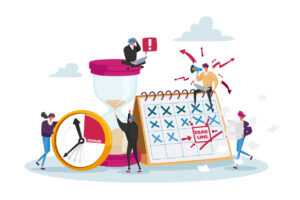4 steps for putting diversity at the forefront of PR
Here’s how you can bring more consciousness to your workflow—and an exercise to help evaluate previous work and identify hidden bias or blind spots.
Editor’s note: This article is a re-run as part of our countdown of top stories from the past year.
PR pros, it’s time to put your money where your black square box on Instagram was “standing in solidarity with #BlackLivesMatter.” You know that fancy wordsmithing you did in a short period of time with self-congratulatory hyperbole and a cool design?
Well now, start implementing—and frankly, it’s about time.
Public relations education and practice are at a trust crossroads. The Edelman Trust Barometer reports that balancing competence with ethical behavior is out of balance. A growing sense of inequity is undermining trust in brands. Per the Edelman report, “distrust is being driven by a growing sense of inequity and unfairness in the system. The perception is that institutions increasingly serve the interests of the few over everyone.”
For years, diversity, equity and inclusion have been championed throughout the workplace. Even “honored” with a workshop here or there. Diversity, equity & inclusion (DE&I) has been treated like an observance—a holiday almost—rather than a thread running through the profession or organization tying it all together.
For practitioners to more quickly adapt to an inclusive planning process, we suggest the implementation of a model where diversity is at the front of PR considerations.
Through learning how to use the Diversity & Inclusion Wheel for PR Practitioners those in the profession can then operationalize this model to build strategic campaigns that encompass DE&I principles.

How to use the wheel
Rather than making DE&I add-on elements of strategic communication campaigns and messages, practitioners should make conscientious decisions to put DE&I considerations at the forefront of their planning. This can only be accomplished when practitioners take the time to develop their skills and knowledge in these areas.
First, establish firm definitions regarding diversity, equity and inclusion. We like these based on language from the Independent Sector, D5 Coalition, Racial Equity Tools Glossary, Beavers and UC Berkeley:
Diversity includes all the ways in which people differ, encompassing characteristics that make one individual or group different from another. Individuals may affiliate with multiple identities. While diversity is often used in reference to race, ethnicity, and gender, there are broader elements of diversity that also include age, national origin, religion, disability, sexual orientation, socioeconomic status, education, marital status, language and physical appearance. This explanation also includes diversity of thought: ideas, perspectives and values.
Equity is the fair treatment, access, opportunity and advancement for all people, while at the same time striving to identify and eliminate barriers that have prevented the full participation of some groups. Improving equity involves increasing justice and fairness within the procedures and processes of institutions or systems, as well as in their distribution of resources. Tackling equity issues requires an understanding of the root causes of outcome disparities within society.
Inclusion is the act of creating environments in which any individual or group can be—and feel—welcomed, respected, supported and valued to fully participate. An inclusive and welcoming climate embraces differences and offers respect in words and actions for all people. It’s important to note that while an inclusive group is by definition diverse, a diverse group isn’t always inclusive. Increasingly, recognition of unconscious or “implicit bias” helps organizations become deliberate about addressing issues of inclusivity.
Now that we have established firm definitions, it’s time to introduce the Diversity & Inclusion Wheel for PR Practitioners. In doing so we can teach our employees, colleagues or team members how to develop more inclusive campaigns from the beginning—the “diversity first” approach.
The Diversity & Inclusion Wheel for PR Practitioners has six core spokes at the center that organizations should consider when beginning to develop a campaign: national origin, age, physical qualities/abilities, gender, race and ethnicity. That means starting with the team that will lead the efforts. If your team isn’t diverse, your campaign likely won’t be either.
The outer layer of the wheel includes 17 additional attributes from marital status to religious beliefs, communication styles, and even mental health/well-being. You don’t have to incorporate every spoke or external layer—but your should consider thoroughly whether the same people are represented over and over and create a campaign that includes where various groups are represented.
Finally, make DE&I practices a habit. Deliberate discussion should be incorporated more than just once at a workshop. Being intentional regarding DEI issues should be woven through all meetings, reviews, team formation and planning. Incorporating “this thinking should be accompanied by some case study review first, using the wheel to assess why previous campaigns do not measure up to the DE&I standard that you are attempting to employ within your organization, for your clients, or with your staff. Posthumous work in the form of campaign review can reveal the hidden biases that your organization has been working with or under for decades. This is not a moment of shame, but rather a moment of clarity for the work that will be done moving forward, a place from which you can benchmark your team’s progress.
A sample exercise
Stuck with how to implement this model at your workplace? Here’s a quick team activity that can be replicated with various previous campaigns you have worked on.
Step 1: Give employees a recent campaign to review. Instruct them to highlight and make notes that illustrate direct connections to DE&I principles. Additionally, direct them to go online to assess the digital assets available for the campaign. For example, examine the brand website, social media channels or view television commercials. Look at the original team that executed the campaign. Was the team diverse? In this step your team can begin to connect specific areas of diversity, equity and inclusion to actual campaigns they have worked on previously.
Step 2: Hand out a blank model (here) that has an image of a circle in the center of the page with a smaller circle in the center. Use the Diversity & Inclusion Wheel for PR Practitioners as a guide. In the smaller circle, ask the team to identify at least two aspects from the center of the wheel in the campaign. In the larger circle, ask the team to identify at least four aspects from the external portion that they believe were implemented in the campaign. In this step, team members begin to investigate the importance of considering multiple aspects of diversity, equity and inclusion. In recognizing this, employees can begin to understand the importance of multidimensional diversity.
Step 3: Ask the team to look up the diversity and inclusion policy of the client featured in the campaign. Next, analyze the principles from the Diversity & Inclusion Wheel for PR Practitioners and compare them to the campaign they just reviewed and evaluated. Do the company’s mission and values align with the campaigns they/your team are executing? By doing this, teams think critically about the messages being sent publicly versus the actions taken internally by organizations.
Step 4: Open the floor to discuss the team’s findings and opinions from the exercise. Team members should provide examples to fuel the conversation. Have the team retroactively explore why certain decisions were made and why (or why not) certain representations are present. Closely examining whether a previous campaign included DE&I aspects builds a foundation for managers and teams to use and refer back to often when conducting research, developing content, identifying strategies or planning campaigns.
Changing the culture of an organization, a strategic process, or even a person doesn’t happen overnight but certainly we cannot afford to leave this work to chance.
Intentionally using tools like the Diversity & Inclusion Wheel for PR Practitioners can help create lasting habits within a company workflow, that in time can alter the outcomes of your public relations work.
Adrienne A. Wallace (@adriwall) is an assistant professor in advertising/public relations at Grand Valley State University. Regina Luttrell (@ginaluttrell) is an assistant professor of public relations and social media at Syracuse University.







Hi – I enjoyed reading about your Diversity Wheel, thanks for sharing. Where would you place the LGBTQ population? I’m interested if you think that would be it’s own core category, or a subcategory?
Thanks in advance.
Amy Robertson